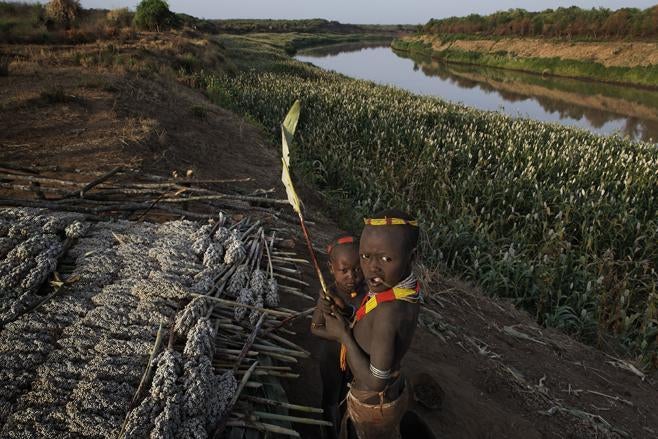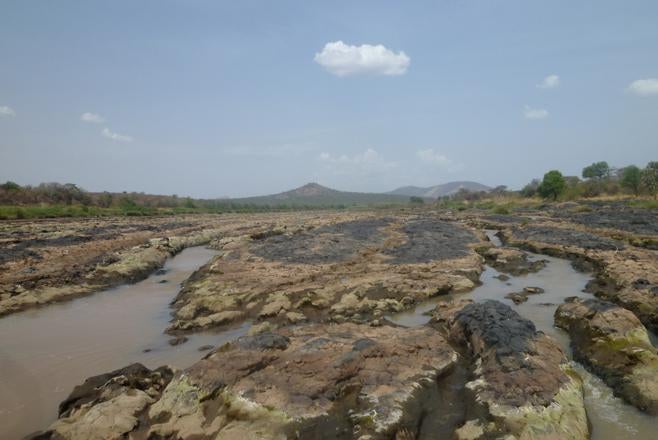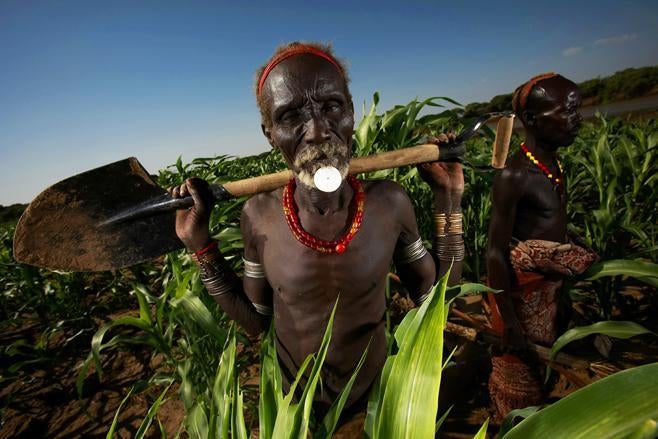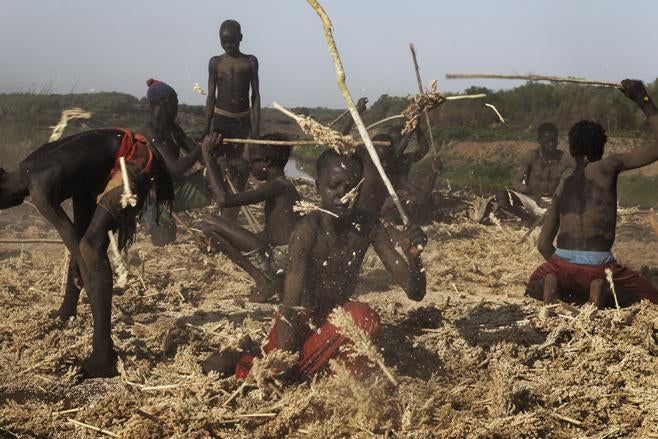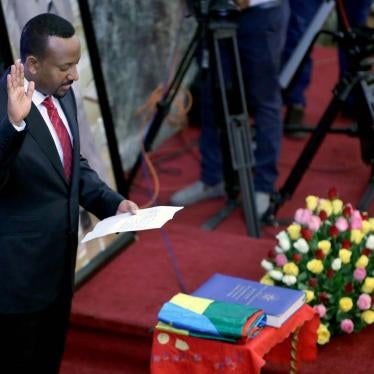How has Ethiopia changed since you were last there?
Addis Ababa, the capital, has changed so much. Unlike before, modern asphalt roads are everywhere, there are freeways, tall, modern shiny buildings, lots of new restaurants, and a light rail system. It used to smell of smoke, from people burning wood to prepare food, but that smell is now gone. People seemed to feel much more free to express their opinions. They were speaking very openly about sensitive subjects in public spaces, cafes, and mini buses. That’s not the Addis I knew, where everyone was looking over their shoulder to see who was eavesdropping.
You went specifically for a workshop on rebuilding civil society. What did you learn?
Under the 2009 Charities and Societies Proclamation, civil society groups working on human rights issues in Ethiopia was decimated. Most nongovernmental organizations (NGOs) were closed. Others had their bank accounts frozen. But a new law was passed earlier this month. It eliminates most of the draconian restrictions from previous legislation. The new agency registering NGOs needs to get up and running and that will take time, but we hope NGOs will be able to register soon, which will open up possibilities for funding. Then they can document abuses and advocate for respect for human rights, which is critical ahead of the May 2020 elections.
What was the workshop like?
There was a feeling of newfound optimism there. Still, it was starkly evident the extent to which civil society working on human rights has been decimated since the Charities and Societies Proclamation was passed 10 years ago. It will clearly take time for the sector to recover.
At the workshop, international and Ethiopian NGOs, such as the Human Rights Council of Ethiopia and the Consortium of Ethiopian Rights Organizations, discussed advocacy strategies and research gaps, and talked about economic, social, and cultural rights. It was a chance for everyone to get together in person. There were people there who I knew quite well but had never actually met. It was nice to put faces to names.
Did anything surprise you?
Some of the activists organized a press conference at the end of the workshop, and I honestly didn’t expect much media interest. But 60 journalists showed up, and most were from the state media. When I talked about how it was our first visa in eight years, there was applause. They asked questions about what work we planned to do in Ethiopia and if we’d open up an office there.
State media never covered our work in the past, and that has clearly changed. But media is still publishing a pro-government prospective. For example, we spoke about all the great reforms happening, and we also talked about our concerns. But most of the media never reported on the concerns.
I have this memory from the press conference, when, among the microphones was one from ETV, which is the main state broadcaster, and next to it was one from OMN, the Oromia Media Network, which used to be banned in Ethiopia. The former government went to great lengths to jam OMN’s television broadcasts and had unfairly charged it under the counterterrorism law. It was great to see them side-to-side and a powerful image of change in the media landscape.
Over the past few years, there have been simmering ethnic tensions across Ethiopia. Where do these tensions now stand?
In Addis, things are good. There’s lots of optimism. But outside the capital – and I’ve been in regular contact with people around the country since Abiy came to power – it’s almost the exact opposite.
Previously, the ruling coalition’s direction was implemented from the highest-level officials down to the villages. An expansive network of intelligence at every level meant the government knew everything, allowing it to suppress any emerging threats to its power and control. The government also used other strategies to stem criticism, including force.
But that system in many places has all but broken down, as people associated with serious abuses, or those not loyal to the current government, have been purged. There is little governance happening at local levels, and local security officials are often ineffectual, allowing some vigilante groups to take control. At the same time, people are feeling newly empowered to speak openly after years of suppression, and many have longstanding grievances over land, border demarcations, access to state resources, and perceived discrimination against their ethnic group.
Unfortunately, institutions that would normally resolve those grievances – the judiciary, parliament, the Human Rights Commission -- aren’t yet seen as independent or capable of doing so.
All this is happening at the same time as a massive influx of firearms into the country, many from Sudan. It’s a dangerous mix.
What does this look like on the ground?
The ethnic tensions play out in different ways. In some places, you see young armed gang members stopping cars and demanding payments, smuggling goods, controlling regional trade. There has been open fighting in other places, and the Ethiopian army has recently been engaged in clashes with the Oromo Liberation Front forces. The OLF was welcomed back into the country, but some of its members weren’t willing to disarm or reintegrate into government security forces.
What’s really worrying is that this violence could just be the tip of the iceberg. Around the boundary between the Tigray and Amhara regions, both sides are engaging in war-like rhetoric and heavily arming themselves. If open fighting broke out between those regions, it would affect the whole country. Yet there has been notable silence from Abiy around this and other emerging conflicts around the country.
Some of the challenges facing the government are inevitable in transitioning from an authoritarian government to a fledgling democracy. But restoring law and order doesn’t seem to be high on the government agenda. Officials don’t seem to be taking these risks seriously. Eighty-five percent of Ethiopians are rural, mostly small-scale farmers or pastoralists who need grazing land and water for their animals. If there is widespread conflict, if they’re displaced, or if they can’t plant or harvest because of fighting, the humanitarian consequences would be dire.
What about the problem of internal displacement?
There are over two million internally displaced people in Ethiopia. This includes 1.4 million new displaced people in the first half of 2018 alone – the largest internal displacement of people in the world during that time period. A changing climate brought increased drought and variability of rains, causing the displacement of pastoralists who didn’t have enough grazing for their animals. But most of those displaced were fleeing armed conflict. In many places along the 800 kilometer boundary between the Oromia and Somali regions, groups, many of them armed, violently removed people from their lands. Because these places are remote, it’s difficult to provide food and other types of humanitarian aid there.
We are worried the government may be forcing internally displaced people back to their lands before it’s safe. Recently, about 900,000 people from the Gedeo ethnic group were forced to flee their lands in the country’s coffee-growing south by the Guji Oromo ethnic group. But the spike in the number of those displaced embarrassed the government, so local officials pressured them to move back in part by telling humanitarian groups – which were feeding the Gedeo – to only provide them food in the places they had fled. Many Gedeo went back because of the pressure, even though for many there is nothing to return to or they feel it is still unsafe.
Using aid to control people’s movement was a strategy the former government regularly deployed. It’s concerning to see it being used again in Abiy’s Ethiopia.
How will these factors play into Ethiopia’s 2020 election?
In the past, Ethiopia’s elections were riddled with irregularities, with the government “winning” over 99.6 percent of federal parliamentary seats in 2010 and all 547 seats in 2015 election. Expectations are high that the 2020 elections will be different.
But lots of important issues about the upcoming elections aren’t being addressed. Key elements for an environment conducive to credible elections, like an independent media, fair registration procedures, and a vibrant civil society, just aren’t in place. Opposition parties, many of which only existed outside of Ethiopia for many years, are starting from scratch. An oft-delayed census, historically controversial in Ethiopia, has still not taken place.
Many people are quietly asking if the elections should be postponed. The ruling party and most opposition parties have not sought a postponement because they all think they will do well. And many of the youth – those who joined the protests that brought about the changes over the past year – don’t feel represented by the existing parties. Combine all this with the current ethnic tensions and the security void, and it’s a potential powder keg.
How does all of this affect your work?
In the past, we never were able to get the government’s perspective on the abuses taking place. We always reached out to officials but got nothing back, which denied them an opportunity to tell their side of the story. I’m hoping this new government will continue to give our researchers visas and be responsive to meeting and discussing our findings. We hope we will also be able to do more research on the ground in Ethiopia, and tackle issues that were previously off limits because of access and security constraints. We also look forward to working more openly with local civil society groups and activists as the sector rebuilds itself. After many years stuck on the outside, there’s lots to do, and we intend to be there to do it.





